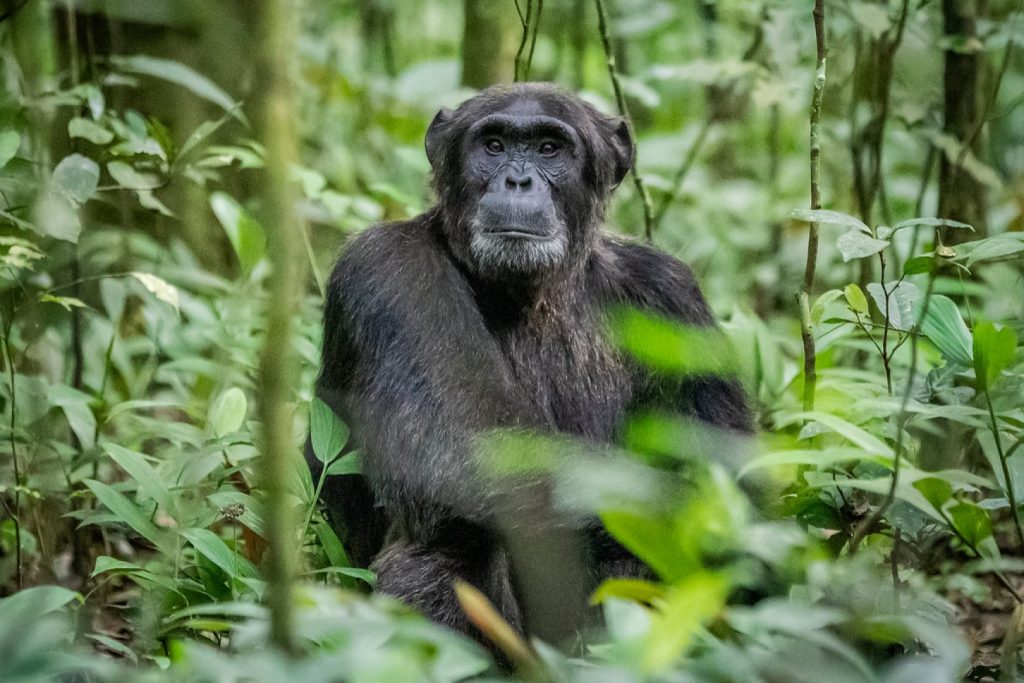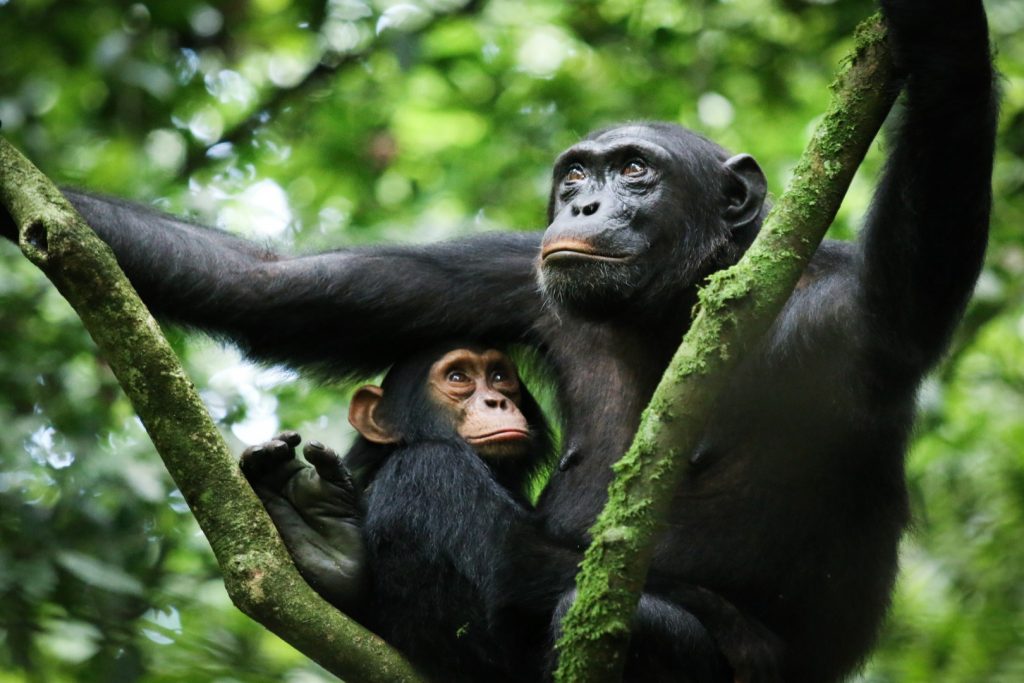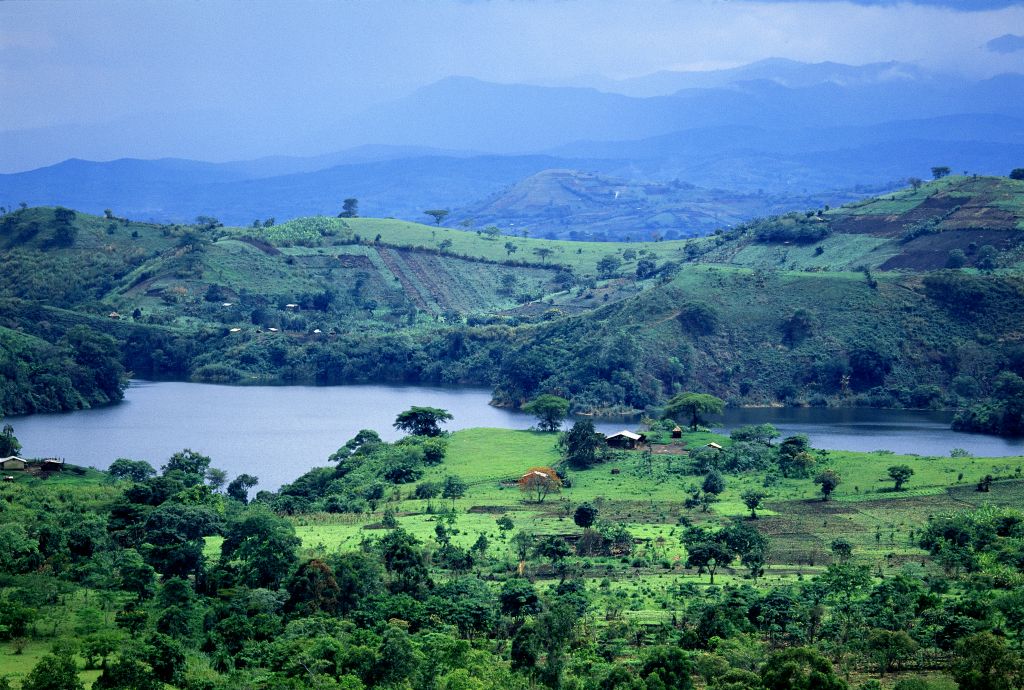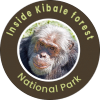
Kibale National Park (KNP) is one of the most visited ten national parks in Uganda under the management of Uganda Wildlife Authority. Kibale National Park was gazetted in 1932 and formally established in 1993 to protect a large area of forest previously managed as a logged forest reserve.
Kibale National Park commonly known as “the home of chimps and primate capital of the world”, lies in Western Uganda. The park stretches through Kabarole, Kamwenge, Kyenjojo and Kasese districts. It’s just 26km Southeast of Fort Portal city, among gently undulating lush green hills of cultivation.
To the west, the legendary “Mountains of the Moon” (Rwenzori Mountains) erupt in snow capped splendor, whilst the grasslands and the lakes of Queen Elizabeth National Park stretch to the south.
This adjoining of the parks creates a 180 kilometres (110 mi) wildlife corridor. It is an important eco-tourism and safari destination, popular for its population of habituated chimpanzees and twelve other species of primates.
Wildlife in Kibale National Park

Kibale National Park harbors over 350 plant species, 71 mammal species, 13 primates and 372 bird species of the 1,042 total birds. Kibale Forest has one of the highest diversity and concentration of primates in Africa. It is home to a large number of endangered chimpanzees, as well as the endangered red colobus monkey and the rare and vulnerable L’Hoest’s monkey. In Rwanda, Nyungwe National Park is a reciprocal of Kibale, home to Chimpanzee in Rwanda and many other primates.
Due to its location between the wet rains forest of Congo basin and the drier West African forest, Kibale supporters an unusually rich array of tropical plants and animals from both areas, most famously 13 species of primate. One of the greatest concentrations of monkeys and apes in the world and the highest in the Uganda is found here, including the endangered chimpanzee and a rare subspecies of the Red Colobus monkey.
The park habits 71 mammal species are present , Uganda’s largest population of forest elephants find refuge here, along with buffaloes, other large mammals and over one third of Uganda s bird species. By comparison to the open Savannah environment of the south, the dense forest makes it a challenge to spot these shy creatures, but the resulting close encounters can be magical.
Climate and Vegetation in Kibale National Park

Kibale National Park covers 795sqkm, forming a contiguous block with Queen Elizabeth National Park, on an altitude of 1,100 – 1,590m above sea level. The vegetation is dominated by the tropical rainforest.
Northern Kibale is also the wettest area, receiving a mean annual rainfall of up to 1700mm, mostly during March – May and September – November. The climate is generally pleasant with a mean annual temperature range of 14 – 27oC. Temperatures are highest (and rainfall lower) in the south where the terrain drops down onto the hot rift valley floor and forest gives way to open grassland.
Forest cover predominates in the northern and central parts of the park on the elevated Fort Portal plateau. Kibale is one of the last remaining expanses to contain both lowland and montane forests. In eastern Africa, it sustains the last significant expanse of pre-montane forest. It is also the location of the Makerere University Biological Field Station.
Kibale is highest at the park’s northern tip which stands 1590m above sea level. The park is a rich tapestry: mature forest towering with giant trees; younger forest exploding in a profusion of new growth; and grasslands affording bird’s eye views over the forest and Rift Valley.
Graceful palms sway along meandering streams to swamps which invite wallowing by the elephants who silently weave their way between giant strangler figs and broad buttresses. In the deep darkness of the forest floor, beetles roll their balls of dung and golden mushrooms push their way through the carpet of soft decay. High in the forest canopy, chattering monkeys spring from branch to branch in search of insects and far above a crowned eagle circles his territory of forest, grassland and lake, waiting for a meal. Wherever you look, a rich diversity of plant and animals are busy playing their role in maintaining the delicate balance of this tropical park.
Geological History of Kibale Forest National Park
The uplands and escarpments in the region are composed of sedimentary rocks, folded and metamorphosed during the upheavals of the Precambrian period, 600-3000 million years ago, and resulting in the stunning scenery of the Albertine Rift and the Rwenzori Mountains. Many of the associated volcanic craters now contains small lakes, some within the park boundaries, Kibale National Park straddles the Rift escarpment. The South of the park is therefore of a lower altitude, hotter and drier than the North and its vegetation is contiguous with the grasslands of Queen Elizabeth National Park, whilst the North remain cloaked in tropical forest.
Although it is often assumed that tropical forests are the culmination of millions of years of stability, they have been waxing and waning dramatically, especially during the Ice Ages of the Pleistocene (1.5 million to ten thousand years ago). During warm, wet periods, forests stretched in a nearly continuous belt across tropical Africa, wizening during the dry periods into a handful of moist, mountainous “island refuges”, containing the essential ingredients for future expansion.
Kibale lies near the easternmost mountain refugium (the Rwenzori and Rift escarpments), which enabled the survival and re-establishment of the wide range of plants and animals associated with the forest today.
Management History of Kibale Forest National Park
The British gazetted Kibale a Crown Forest in 1932 and a Forest Reserve in 1948.Besides protecting core areas of the natural forest, the forest Department extracted hardwood timber, established plantation of exotic trees and harvested wild coffee. Uganda National Parks (UNP) took over responsibilities of the Forest Reserve in 1994. In 1996, UNP merge with the Game Department to form the new Uganda Wildlife Authority to consolidate and facilitate wildlife protection and management.
Hardwood Timber
Exploitation of the forest was minimal until 1950’s, when timber was needed for Kilembe Copper Mine, near the town of Kasese. The most favored trees were Fagara (Satinwood), Lovoa (Mahogany family) and Olea (Elgon Olive). Due to political and economic turmoil, logging ground to a halt during the civil war.
Softwood Plantations
Grassland hilltops in the northern sector of the forest reserve were planted with foreign softwoods (Pine, Cypress and Eucalyptus) in the order to keep with increasing demand for poles and firewood, especially for the surrounding tea factory.
Wild Coffee
Wild Robusta coffee (Coffea canephora) grows in over 70km2 of the forest. The largest harvest produced 100 tons in one year (generating twice the revenue of timber fees) and it is hoped to start production again soon.
Enquire Now